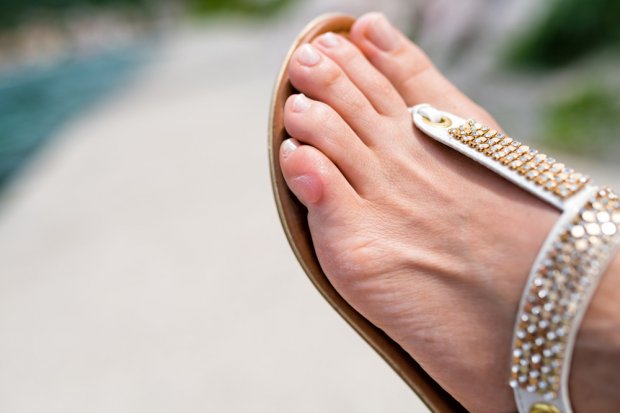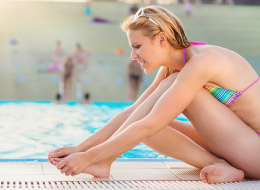Foot Health Tips How To Prevent Blisters On Feet
Certainly everyone has had to deal with a blister (or ten) on their toes, heels or soles — but there’s actually no reason why anyone has to suffer with the painful bumps and uncomfortable bandages. All it takes to prevent blisters on feet while walking, running and wearing brand new shoes is a little know-how about why blisters form and a couple of tips for preventing the pesky skin bubbles.
Preventing Friction Prevents Blisters
The root cause of blisters is friction. When something causes friction on your feet — whether it be shoes that rub, socks, or sweat — your body tries to protect itself by creating a buffer between the culprit and your skin. So in order to prevent them, you must prevent friction. Luckily, there are several ways to reduce rubbing on your feet and stop a blister (and an infection) long before it forms.
1. Choose Shoes With Adequate Toe Space
Shoes that squeeze the toes together are more likely to cause blisters, so make sure you wear footwear with wide toe boxes.
2. Consider Wearing Different Socks
Foot blisters happen at a high frequency during military basic training, so the governmental agency has done several studies on how to reduce blister formation. Their findings suggest that double layer socks help prevent trouble spots on feet as they form a barrier between footwear and skin and can even act as a bandage when you already have a problem area.
3. Use Antiperspirant To Reduce Foot Sweat
Sweat instantly creates friction, so to reduce unwanted foot slippage and rubbing, try using antiperspirant on your feet to cut down on excess moisture and keep your feet dry. This is especially helpful in warm environments, as blisters are more common in humid areas than they are in dry weather conditions.
RELATED: Can Foot-Numbing Sprays Really Reduce Foot Pain?
4. Use Low Friction Insoles
If you engage in a lot of physical activity that leads to blisters (if you hike or run marathons, for example), you may want to consider trying low friction insoles. The special devices help to dry foot sweat that leads to rubbing, and military studies show they do help reduce the frequency of blister formation and can help when you're trying to heal a painful spot that has already formed.
5. Wear Shorter Heels (This Is For Athletic Shoes, Too!)
Elevated heels can force your toes to the front of your shoes, which causes blisters. But we’re not just talking about high heels; athletic shoes with thick, cushioned heels can also slant your foot forward and lead to blisters. If you’re still developing painful bumps even after switching out your shoes, speak with an experienced shoe salesman about footwear that has a reduction in what’s called a heel-to-toe-drop (the inclination your foot has in a specific pair of shoes).
6. Pay Attention To Your Shoe Material
Footwear manufactured from stiff, manmade materials are almost always more likely to cause blisters than footwear made from soft, natural materials. Therefore, it’s always a good idea to choose shoes made from flexible, comfortable materials like leather and suede.
Editor's Note: Bandages, tapes and moleskin are all helpful in protecting a blister when it forms and should be applied daily until the wound fully heals.
If it's too late and you already have a blister, check out these quick ways to heal trouble spots before they get worse and lead to an infection. Meanwhile, adding these essential oils into your foot soak water can help keep your feet soft and blister-free.
Notice concerning medical entries:
Articles having medical content shall serve exclusively for the purpose of general information. Such articles are not suitable for any (self-) diagnosis and treatment of individual illnesses and medical indications. In particular, they cannot substitute for the examination, advice, or treatment by a licensed physician or pharmacist. No replies to any individual questions shall be effected through the articles.






